The kuhli loach is an active bottom feeder and an excellent addition to freshwater tanks to help keep them clean. It likes to hide during daylight hours, but once the sun goes down, it will come out to feed and become very active.
Peaceful and shy, they can fit in well in a tank community, just be careful not to put them with bigger fish that might see them as food.
Their most natural behavior can be observed when kept in small schools of between three and six fish. Anything less will add to their shyness.
When they are active, the kuhli loach will swim around, scavenging from the bottom of the tank. Darting in and out the sand and swimming around as if they are hyperactive, they look like a mass of tiny writhing eels.
This can be very entertaining to watch. Just make sure your filters’ outtakes are covered, as they have been known to try to escape.
In this article, we take a look at what you need to know before adding a kuhli loach to your tank.
We cover where they originate, a detailed look at kuhli loach care, and what to expect if you have them in your home aquarium. Then you can then decide whether they will fit into your fish community, and your ambitions as a fish keeper.
At a Glance Overview
Firstly we will detail the basics of this peaceful, lively fish. This quick overview is a good place to start your research.
| Characteristic | Details |
|---|---|
| Common name(s): | Kuhli loach, Kuhli loach pangio kuhlii coolie loach, leopard eel, prickly eye |
| Scientific Name(s): | Pangio kuhlii |
| Family: | Cobitidae |
| Origin: | Southeast Asia, gentle stream, slow-moving rivers |
| Care Level: | Moderate |
| Temperament: | Peaceful |
| Adult Size: | 4.5 inches |
| Color Form: | Red, tan |
| Lifespan: | 10 years + |
| Minimum Tank Size: | 20 gallons |
| Typical Tank Setup: | Sand, smooth gravel or rocks |
| Tank Level: | Bottom dweller |
| Diet: | Carnivore |
| Water Conditions: | Freshwater, 79-86° F, KH 3-5, pH 6.0-6.5 |
| Tank mates / Compatibility: | These peaceful fish can be kept with many others as long as they are not big enough to eat them. They prefer to be in schools of 3 or more of their own kind. |
The kuhli loach is native to areas of Southeast Asia, where it can be found in slow-moving rivers and mountain streams.
There are several species that sell as kuhli loaches, but we are just concentrating on one, the Pangio kuhlii. Let’s find out more about this fish.
What Does a Kuhli Loach Look Like?
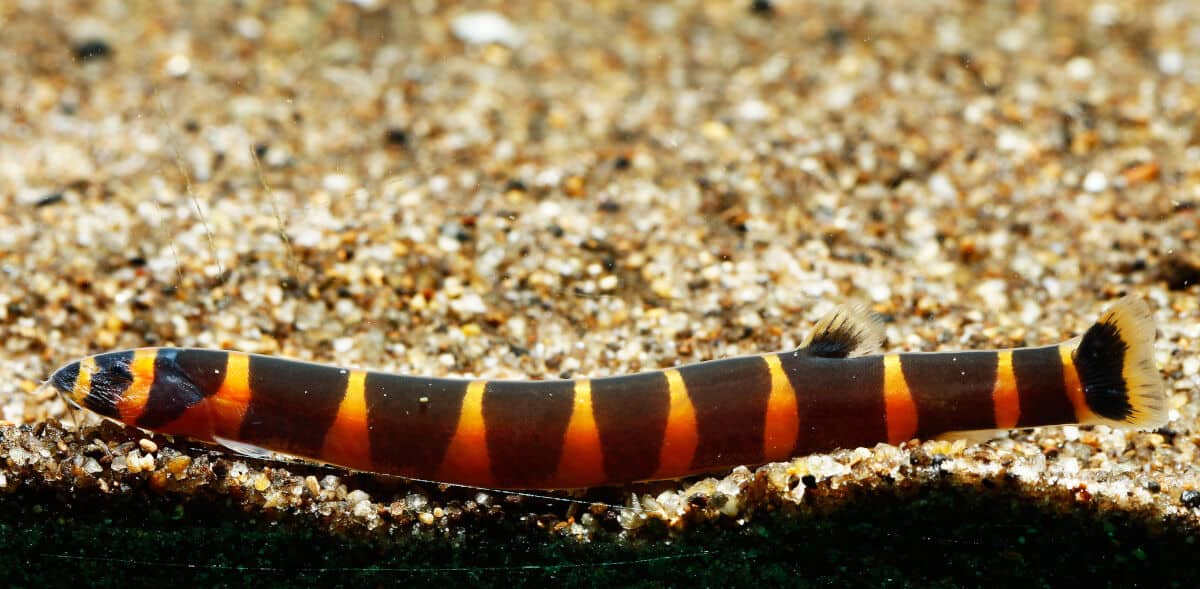
Resembling a small eel, this fish grows to between 3 inches and 4.5 inches long. Sometimes in a home aquarium environment, though, this can be less.
Their background body coloring is a pinkish yellow, especially on the underside. They then have between six and ten dark vertical half rings, which finish just short of the belly. There are three dark bars on the head.
There are also black kuhli loaches which are a dark silvery grey with no rings. There is also an albino kuhli loach that exists, and will be strikingly visible in any tank.
The head is devoid of scales, and the eyes have a transparent skin covering. There is a pair of short spines set just in front of the eyes. These can be raised when threatened, to prevent them from being swallowed by predators, or netted by aquarium owners.
A downturned mouth has four pairs of barbels around it, almost making it look like it has a whiskery mustache.
The dorsal fin is set well back on the body, closer to the tail than the head. All the fins are translucent.
Differentiating between sexes in these fish can be challenging unless a female is plumper than usual and heavy with eggs.
Adult males will have a branched and thickened first ray in the pectoral fin, while the females are generally slightly larger and heavier.
How Does a Kuhli Loach Behave?
Kuhli loaches are a peaceful fish which fit in well with a community. They spend their daytime hiding and their evenings scavenging through the substrate for food.
Although they aren’t a schooling fish, they do enjoy the company of other loaches. When a lone specimen is kept, it’s likely you will rarely see it. Give it some buddies, a group of about six other loaches, and you will find them more active.
You might sometimes notice them lying on its side on the bottom of the tank. Don’t worry, it’s not sick, this is normal behavior if it can’t find a suitable hiding place.
When these fish become active you will notice them following each other around, digging in the sand for food. You could see them around low growing or shallow floating plants, or hanging from taller ones. They treat the aquarium like a child would a playground.
Watching them when they have a feeding frenzy is quite entertaining, as the following video shows. Writhing around each other in an eel-like fashion, they almost look like they are playing with the food pellet:
Generally bottom-dwelling, loaches do like swimming into a bubble stream, or against the current from a filter outlet. Do make sure you keep your filter inlets covered, to prevent them from harming themselves.
This peaceful fish can be kept with other species, as long as they aren’t big enough to eat them. Good tankmates are small fish, such as danios, corydoras, tetras, and rasboras.
They don’t bite but can stab you with the spines below their eye, so take care.
What are the Ideal Tank Requirements and Habitat?
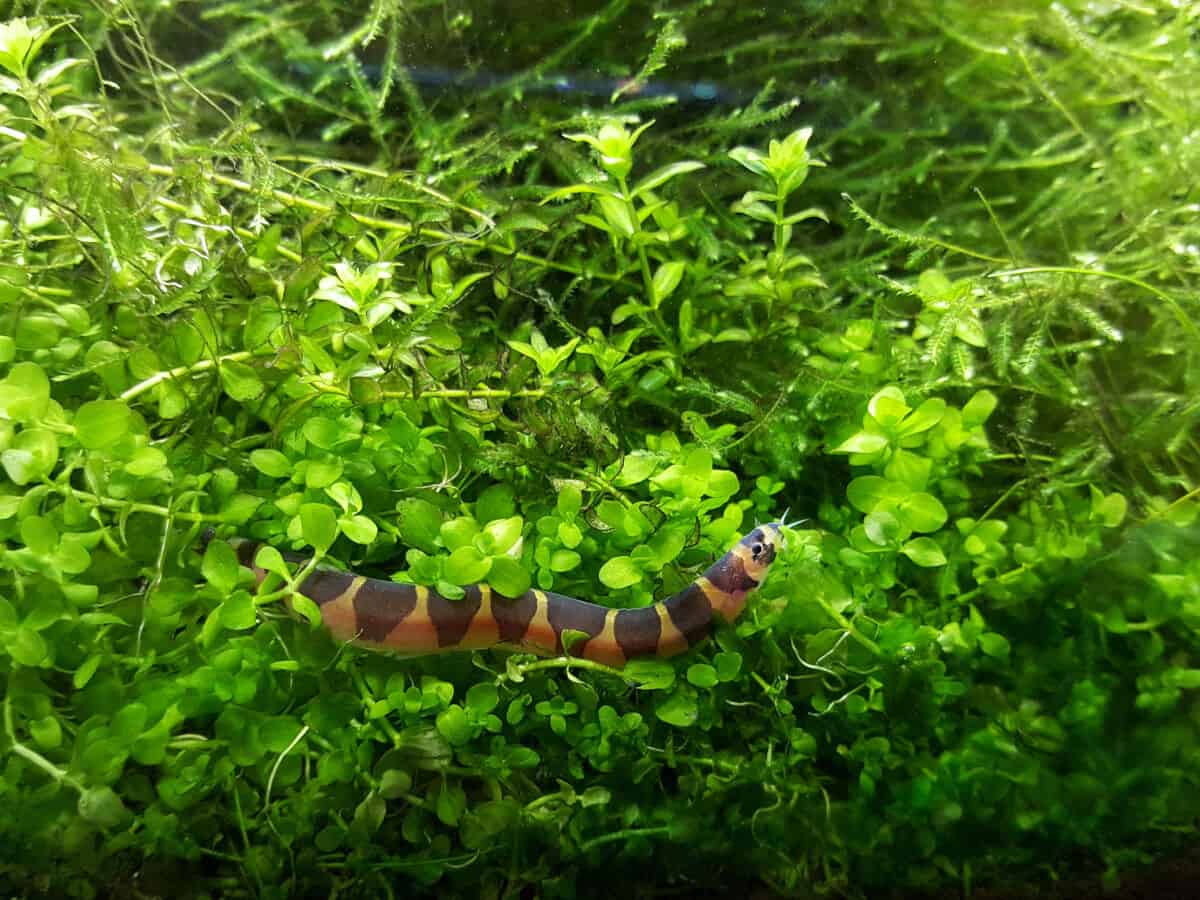
These fish are native to areas of Southeast Asia. This includes Sumatra, Indonesia, Malaysia, Singapore, and Thailand.
They live in small groups of their own kind, in the sandy areas of mountain streams and slow-moving rivers. There is usually plenty of leaf litter in the freshwater. Their habitat lies under the forest canopy, which provides shade from the sun.
What Size Tank do Kuhli Loach Need?
An ideal tank size would be a minimum of 20 gallons, although some recommend 50 gallons or more.
We’re firmly in the camp that ‘bigger is always better’, but 20 gallons+ will suffice.
What Water Type and Temperature do They Need?
They need freshwater that should be slightly acidic, with a pH of 6.0 to 6.5. And KH should be between three and five.
The ideal temperature for a tank containing loaches is between 79 and 86 degrees Fahrenheit.
They need a good level of water movement in their tank, which has plenty of oxygenation.
What Substrate is Suitable?
In their natural habitat, the streams and rivers these fish inhabit have sandy bottoms.
To mimic their natural habitat and promote natural behaviors, use a substrate of sand or small smooth gravel. Sharp edges can scratch their skin, so it’s best to avoid any rough rocks or jagged pebbles.
What Filters Should You Use?
Consider an under-gravel filtration system, or a canister filter or powerhead. This will keep a high oxygen level in the tank and provide the gentle to moderate current these fish like.
You also need to make sure about 30 percent of the tank water is replaced each week. When you do this, be sure to use an aquarium gravel vacuum cleaner to remove excess waste and food, but leave any accumulated biofilm on rocks.
Do Kuhli Loach Have Any Preferential Lighting Needs?
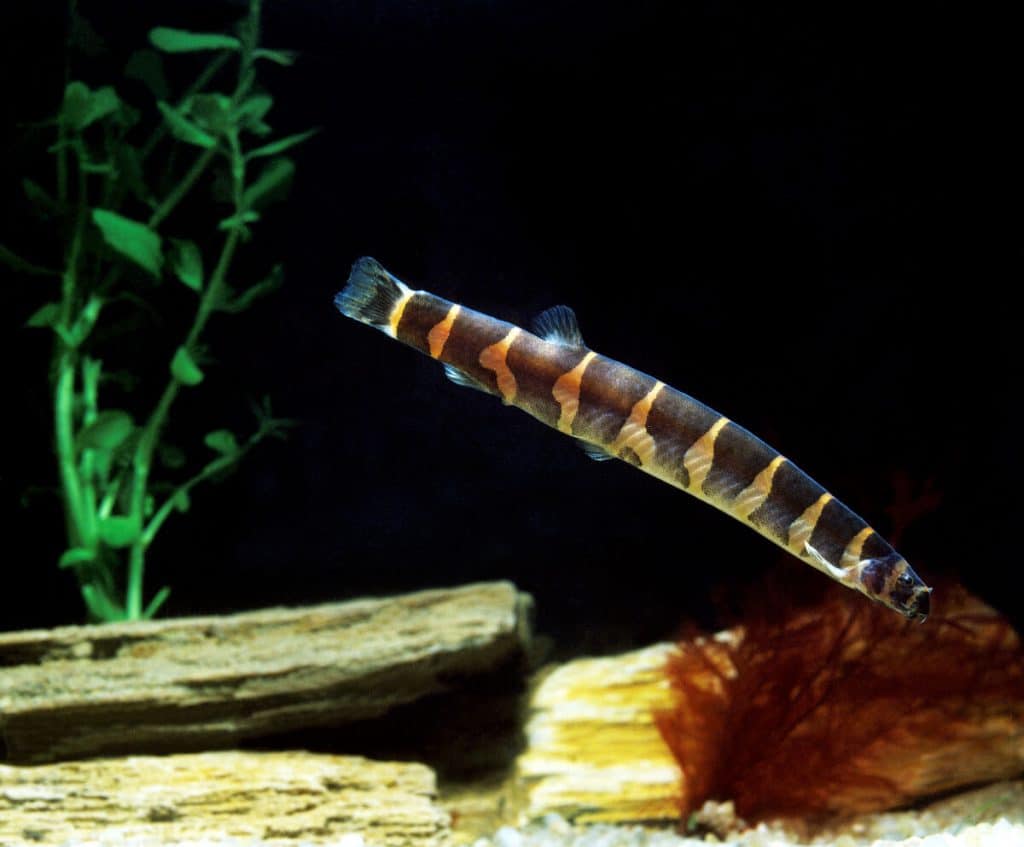
These fish will fare best in subdued lighting. They will often be hidden during the day and come out to scavenge and feed at night.
Don’t be tempted to turn on bright lights or shine a torch into the tank. This will send them back into hiding and can startle them and other fish.
What Decorations and Plants Can You Use?
Hiding places are a necessity for the kuhli loach, so make sure you include some large smooth rocks, caves, and a few pieces of driftwood. They will often all hide together in the same place.
Peat moss spread across the substrate can replicate organic debris which will be found in the wild.
Their curiosity will be peaked if you can provide some twisted root systems from plants, which they will dart in and out of as they explore the tank.
Talking about exploring, make sure you have a cover that fits the tank well. Loaches have been known to try to make a break for freedom by jumping out of the tank!
How Many Kuhli Loach Can You Keep Per Gallon of Water?
The recommendation for one kuhli loach is 10 gallons of water. While their bioload is small, it is probably advisable if you have a group of five within a 50-gallon tank.
What do Kuhli Loach Eat?
Loaches are carnivorous fish and love to scavenge in the sand for morsels of food. You will often see them burrowing and then blowing the sand out of their gills as they filter it for food.
What do They Eat in Their Natural Habitat?
Kuhli loaches are natural scavengers and will filter the substrate in the wild for any food they can find. This could be small worms or bits of food dropped by other fish. They can forage through plants and algae, hoovering up small organisms hiding there.
What Should You Feed Them in Your Aquarium?
Apart from cleaning up leftovers from other tank inhabitants, these fish will enjoy a wide variety of foods. The main thing is to make sure the food will sink to the bottom, where the loaches rummage through the substrate.
You can feed them flake food, frozen or freeze-dried pellets, tablets or granules. Live food could consist of an assortment of tubifex, bloodworms, glass worms, daphnia and brine shrimps.
Are There Human Foods They Can Eat?
While carnivorous, these fish will often scavenge vegetable-based foods as well. You could feed them small pieces of green vegetables, like peas, spinach or cucumber.
How Often Should You Feed Them?
Kuhli loaches should be fed at night, preferably after the lights are out.
Give them a quality prepared pellet or flake-style food once every day and make sure they get live, or frozen live food two to three times a week.
Special Kuhli Loach Care Requirements
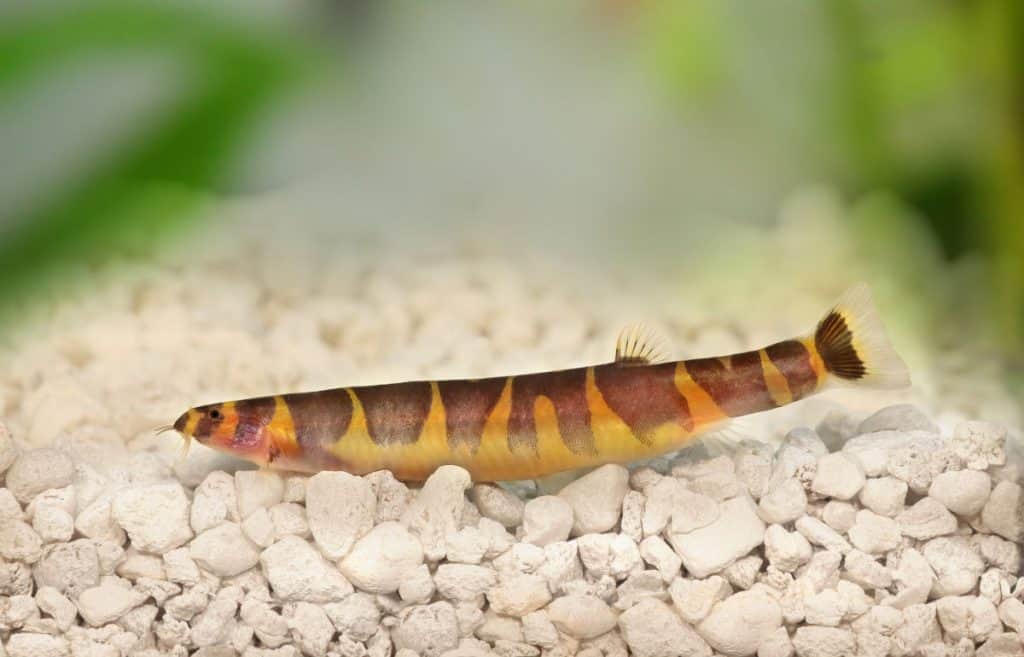
Maybe due to the lack of head scales and faint body scales, they are more susceptible to disease than some other fish, especially when you introduce them to an established tank.
They are also sensitive to certain medications used to treat some diseases so as a result, you might need to remove them into a separate tank if you treat other fish, and use activated carbon to remove medications from the main tank before putting them back.
If the kuhli loach are the fish with the illness, they may need a lower dose than other species and what is written on the packet.
The best way to prevent disease is to make sure they have the proper habitat and are fed a balanced diet so they get all the nutrients they need and are strong.
Also, anything you add to your tank is capable of carrying disease in with it. This includes decorations and substrates, as well as new fish.
Make sure you quarantine any other fish in a separate tank and clean ornaments before putting them in your established tank. This way, bacteria are not transferred.
Tank Mate Compatibility
Any fish which are larger and likely to see the kuhli loach as food should not be put in a tank with them.
Their best tank companions would be smaller fish, including some of the many colorful and popular tetras, or the peaceful catfish. Two other good tank mates would be rasboras or the active and inexpensive danios.
Can You Keep Many Kuhli Loach Together?
The simple answer is, “Yes you can, and yes you should.”
A single kuhli loach will likely hide most of the time and rarely be seen. When you have a small group of six or more they become more sociable, scavenging together and interacting with each other.
They will also hide together, and you might see them vying for position under a rock or in a piece of driftwood.
Buying advice
You will readily find kuhli loaches for sale in most aquarium shops and online. They cost anywhere between three dollars and seven dollars each. Discounts are often offered on multiple purchases.
When buying a loach, make sure it has no white spots on the body. This is a sign it has “Ich,” a common fish disease.
While the fish will transport well, make sure it has plenty of places to hide while it becomes acclimatized to its new home.
Can You Breed Kuhli Loach?
It seems that breeding this fish in an aquarium setting happens more by accident than design.
When a female is pregnant, you can see bright green eggs under the skin. Once spawned, the eggs are sticky and adhere to the stems and roots of plants.
Like many other fish, kuhli loaches cannibalize their eggs. If the parents or other threats are removed, the fry, which can number a few hundred, hatch within about a day.
Ideal food for the fry include freshly hatched brine shrimp, infusoria or prepared fry food.
Interesting Facts and Trivia
Here are a few interesting facts about the kuhli loach:
- These fish have been known to get beneath a bottom filtration system and breed a whole new colony.
- They lie on their side and play dead, darting back to life when startled.
- They can hide for several days at a time, not being seen.
- This loach was named to commemorate the German zoologist and biologist, Heinrich Kuhl.
Summarizing the Main Points
Kuhli loaches are a peaceful, bottom-dwelling fish that will be an excellent addition to a freshwater tank with a capacity of at least 20 gallons.
These eel-like fish swim in an undulating motion, moving in and out of the sand and plants to feed. Mostly nocturnal, they hide during the day, so make sure you give them lots of places they can secrete themselves.
A sandy or smooth gravel substrate suits them best, with ornaments, such as driftwood, smooth rocks, caves and plants with twisted roots. While timid during daylight hours, they are more social when kept in groups of six or more.
They have been known to breed in an aquarium, but this tends to just happen rather than being put in a breeding tank.
For a fish keeper, kuhli loach care is easy to manage. They will help keep your tank clean, scavenging leftover food. The water needs to be changed by 30 percent each week, to keep it at an optimum cleanliness for these fish.
Do you have any questions or any kuhli loach care tips you can pass on? Please do leave us a comment below, we would love to hear from you.
Happy fish keeping!

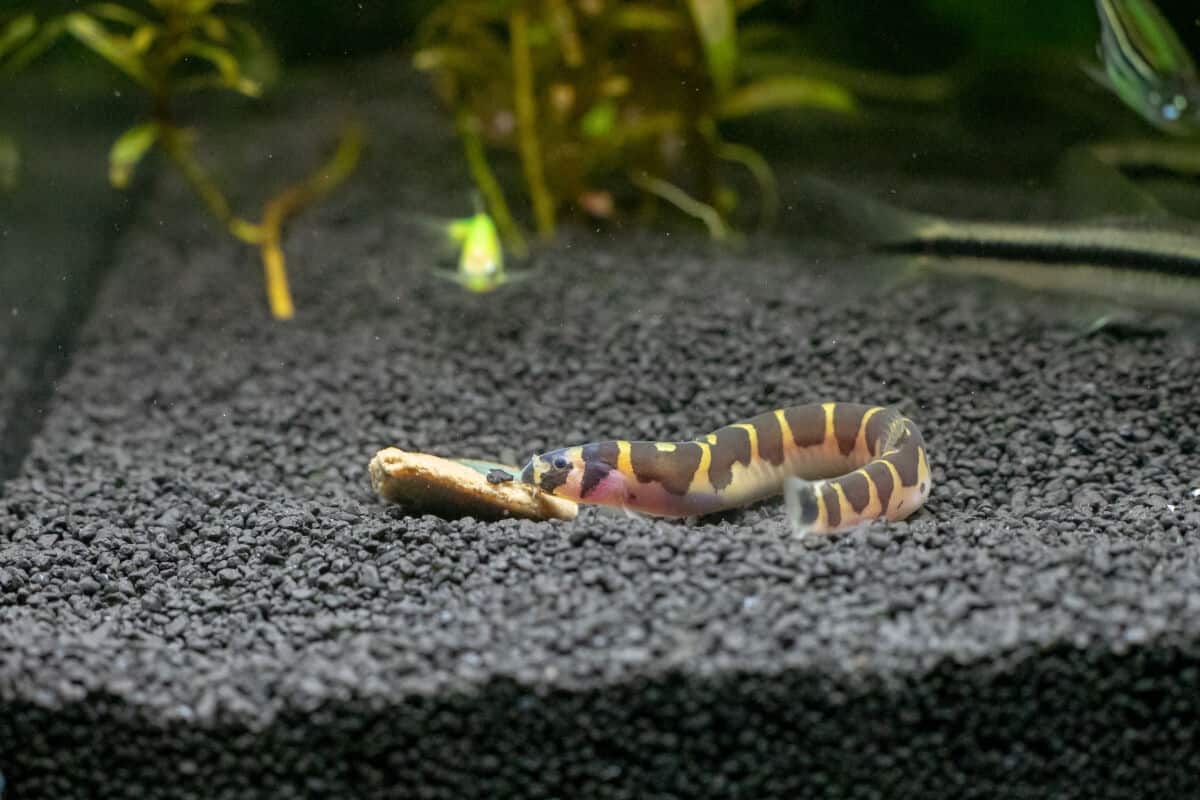
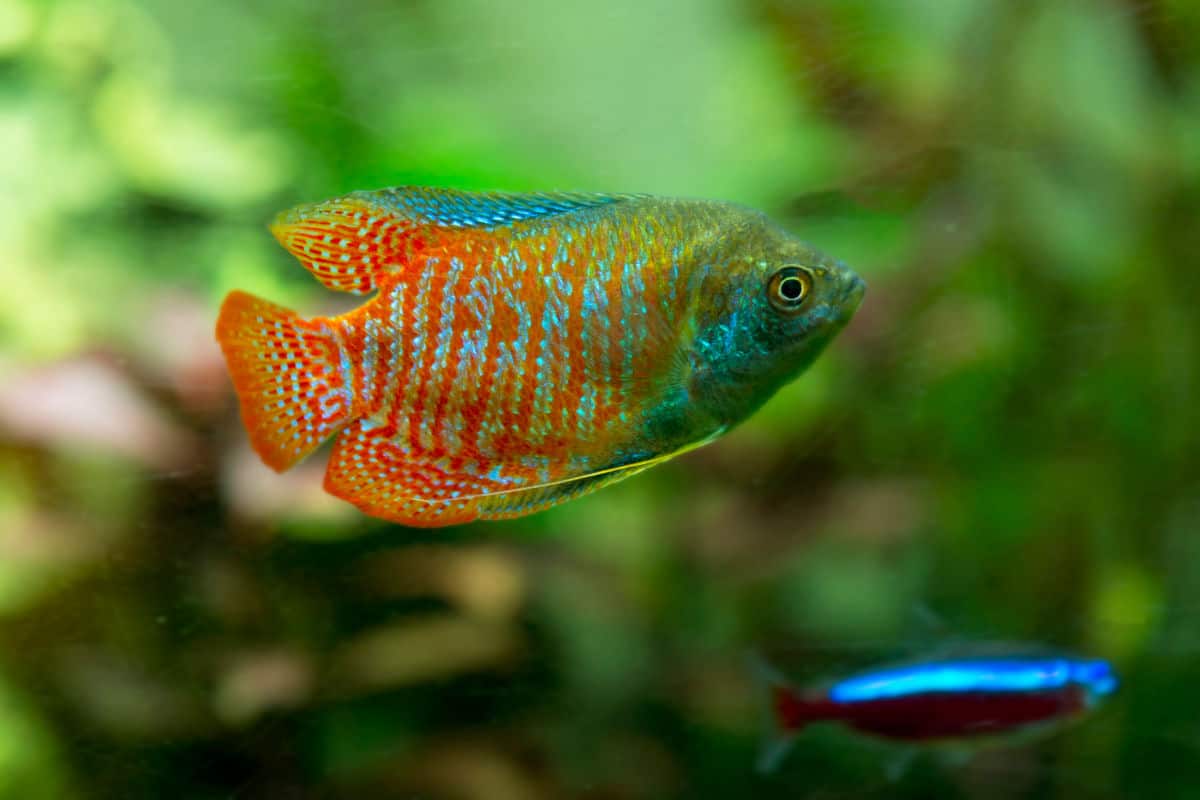
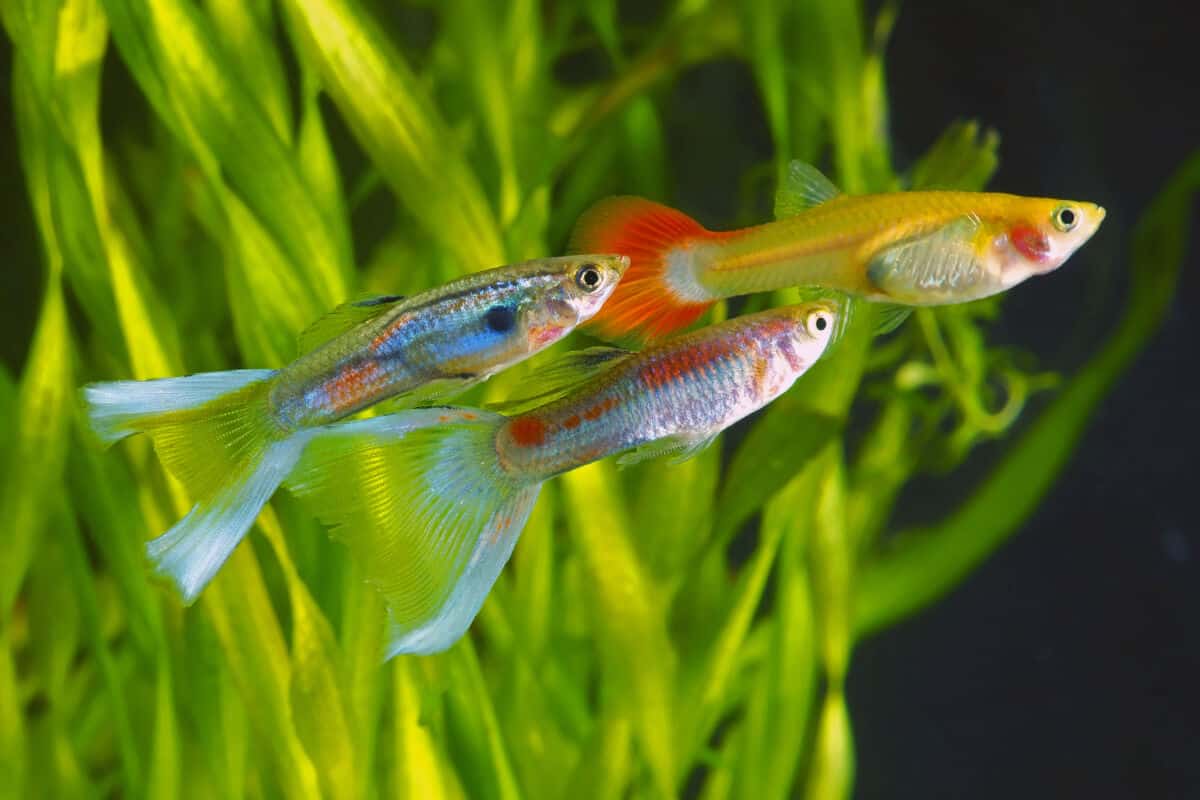
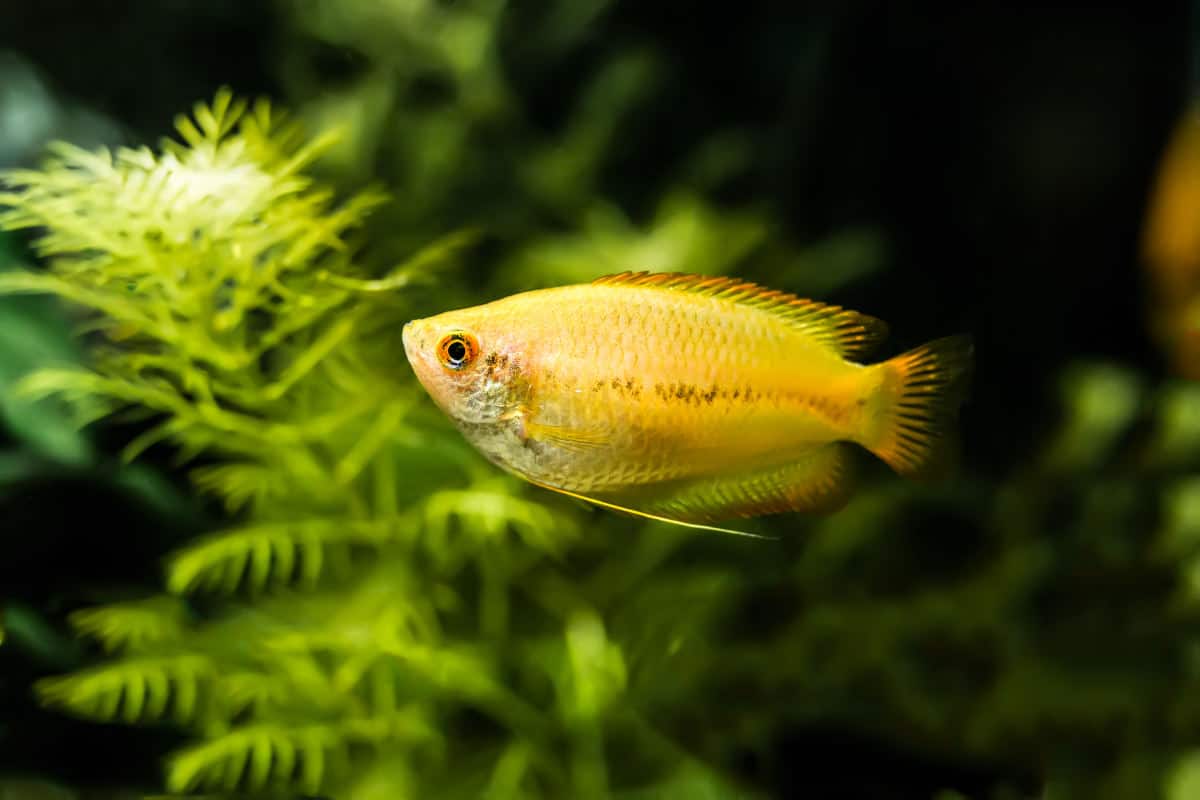
I just bought Kuhli loaches for the first time, 6 of them. One of them has already disappeared. The other five are very active, even during the daylight hours. Is that normal?